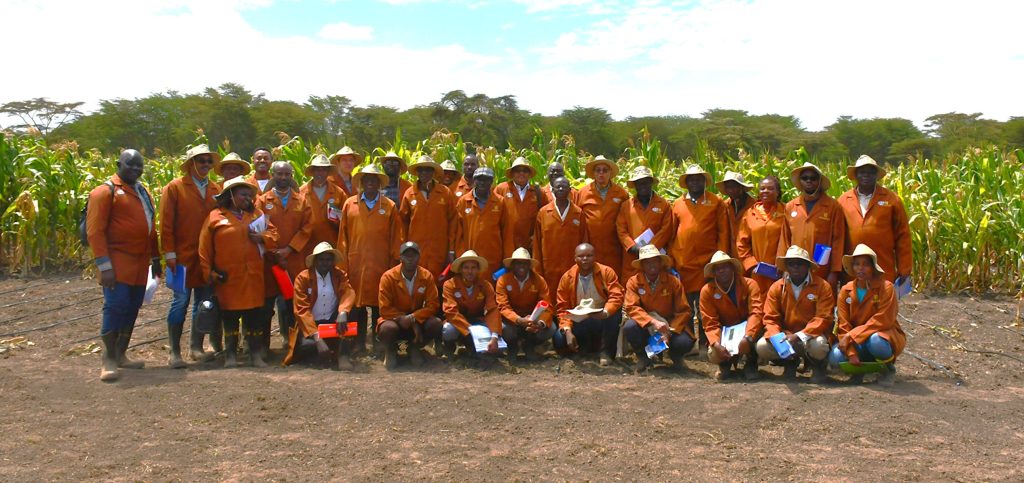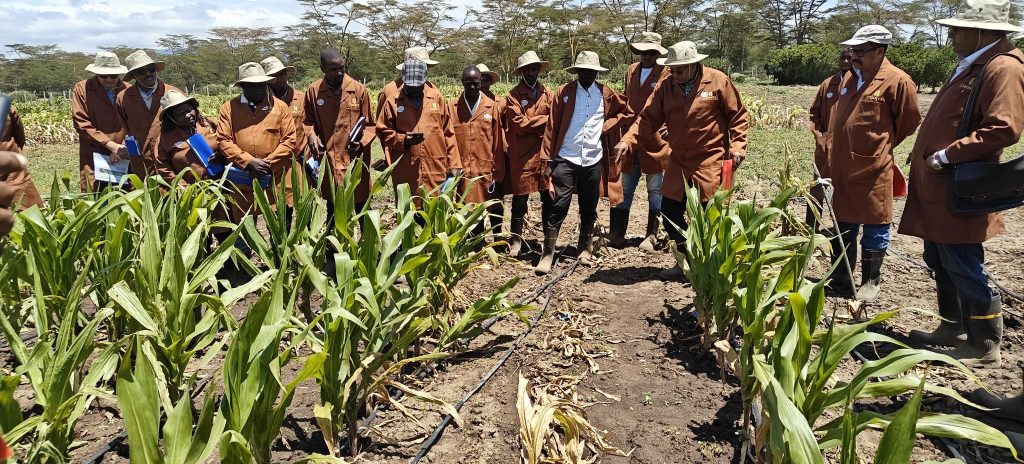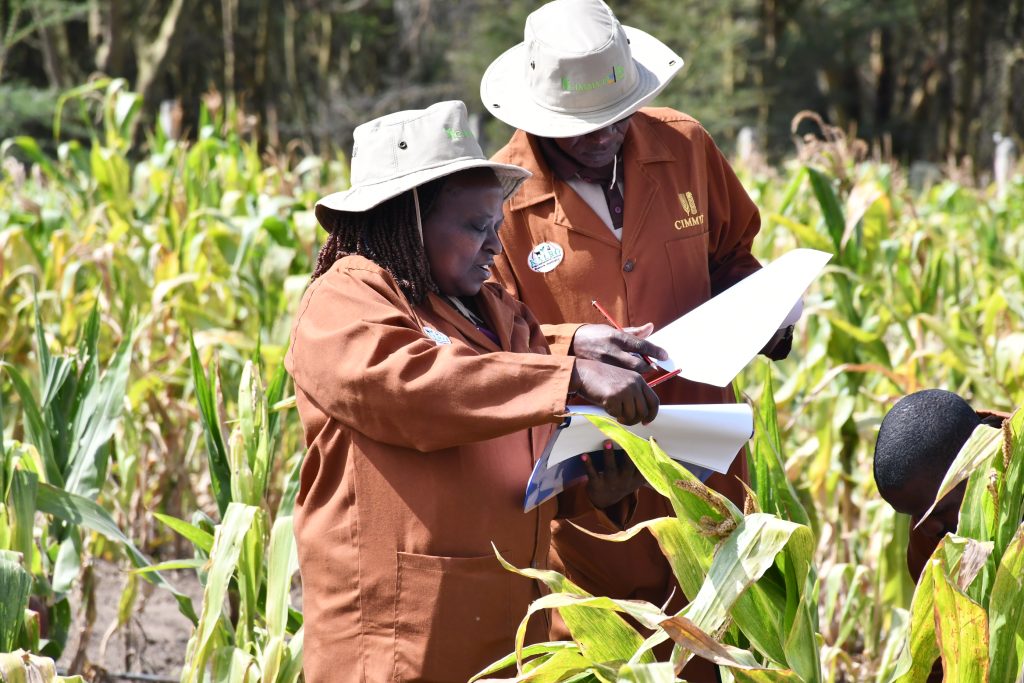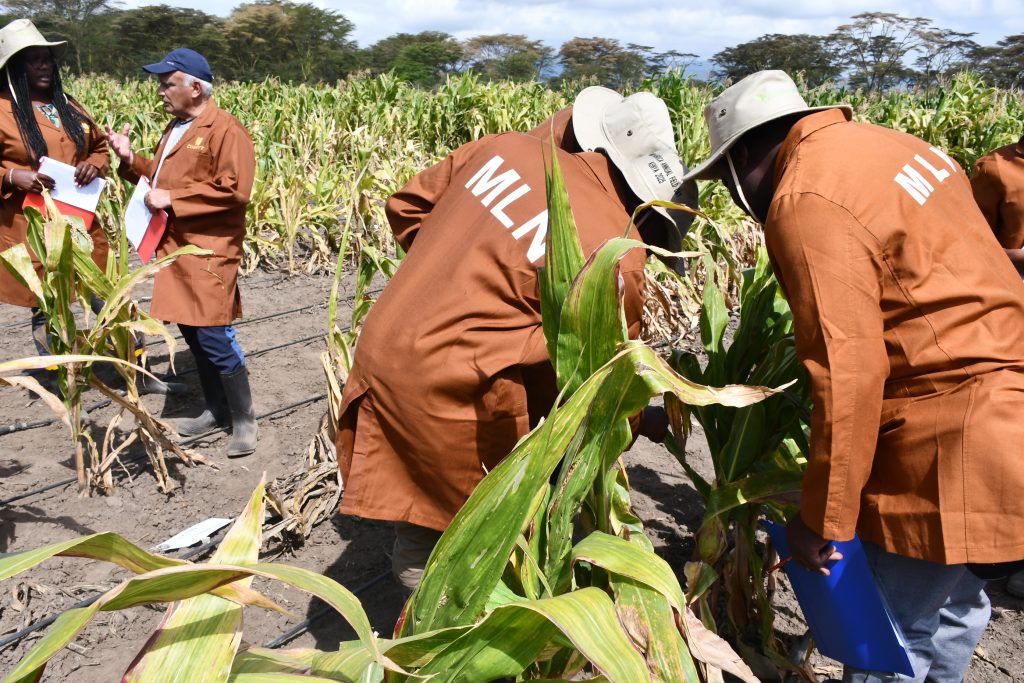Partners in Resilience: Co-developing Stress-Ready Maize for Africa
IMIC-Africa Field Day | Turning MLN from crisis to comeback
Dr. Suresh,L.M. (10th Sep 2025) : Maize still carries dinner on its back for 200M+ households across sub-Saharan Africa, yet yields keep taking punches from drought, foliar complexes, and—let’s be honest—the heavyweight champ of disruption this past decade: Maize Lethal Necrosis (MLN). It hasn’t just slashed harvests; it has jammed seed movement and rattled confidence across markets. That’s why, back in 2018, CIMMYT doubled down with IMIC-Africa—a public–private engine designed the old-fashioned way (clear roles, shared protocols, field rigor) but tuned for modern speed (data pipes, fast go/no-go, and clean-seed discipline). The result? A living proof-point that when NARES, NPPOs, and seed companies pull in one direction, resilience stops being a slogan and starts being a supply.

At the heart of this partnership sits the Naivasha MLN platform, co-run with KALRO—a world benchmark where rigor isn’t a buzzword, it’s the air everyone breathes. Over 241,000 entries and more than 400,000 rows have been phenotyped under high-heritability protocols and strict quarantine, giving partners a common proving ground and a shared language for decisions. Across 12+ NARES, one NPPO, and 17 private companies, more than 250,000 germplasm entries have been screened under artificial MLN inoculation. That pipeline is moving: in 2025 alone, 800+ elite lines were pressure-tested, 100+ showed strong resistance, and 400+ tolerant lines were already shared for partner integration. Downstream, the breeding outputs are real: 350+ resistant lines, 20+ resistant hybrids released, and in key cases, MLN severity driven down from ~70% to ~20%. Not vibes—verifiable delta.
Then came the moment that felt like history turning a page. On 10 September 2025 at the IMIC field day in KALRO-Naivasha, more than 60 participants from 30+ seed companies watched a milestone unfold: the successful CRISPR gene editing of a key MLN resistance locus on chromosome 6 (157 Mb), delivered by CIMMYT in collaboration with Corteva Agrisciences. Side-by-side under MLN inoculation, gene-edited resistant lines showed clear, visible differences from their susceptible progenitors. The room didn’t just see plants; it saw time compress. With gene editing, we can preserve the performance of elite parental lines and add resistance traits without dragging along unwanted baggage—a clean graft of resilience on top of proven combining ability. Seed companies got it instantly, and their feedback said the quiet part out loud: this is bigger than MLN. The same playbook can be turned toward other diseases and climate stresses, accelerating the build of hybrids that don’t flinch when seasons misbehave.

This is exactly what public–private partnership was built for. NARES keep the work grounded in national adaptation zones; NPPOs lock in clean-seed assurance; private seed companies translate resistance into commercial reality; and shared infrastructure plus transparent data flows cut months—sometimes years—off the path from promising line to farmer field. The Naivasha platform makes it fair (one protocol), fast (real-time phenotyping and marker data), and safe (quarantine-tight and diagnostics-driven). Joint stage gates align investments; training and field clinics make capacity stick; and clean-seed SOPs keep trade lanes open. In a region where every week of delay means grain left on the table, this system turns partnerships into yield.

The field day itself was the best kind of peer review: 800+ lines across maturity groups, walked and ranked by breeders and QA leads who live and die by data. Favorites were picked, notes were compared, and plans were made—not for a paper, but for next season’s seed bulks and demo sites. That’s the IMIC rhythm: first access to elite, MLN-ready germplasm; data edge for sharper decisions; speed to market through aligned go/no-go gates; and a capacity lift that stays behind after the banners come down. Add CRISPR to that mix, and you’re not just accelerating one trait—you’re future-proofing the enterprise.

So here’s the invitation, simple and serious. If you’re a NARES, NPPO, seed company, or value-chain financier who wants measurable, near-term impact: plug into the IMIC-Africa 2025–2027 sprint. Co-fund a trait package. Host a regional demo. Help institutionalize the clean-seed regime and scale resistant hybrids across adaptation zones. The pipeline is real, the protocols are proven, and the partners are ready. Gene editing has given us a sharper chisel; partnership remains the steady hand. Together, we can turn MLN from a chronic crisis into a controlled risk—and use the same machinery to tackle what’s next.
Gratitude where it’s due: to our collaborators and especially Corteva Agrisciences for bringing cutting-edge science into the field, and to the 60+ participants who showed up with curiosity and rigor. The road ahead is collaborative by design—and that’s our competitive advantage. Let’s scale, strengthen, and sustain—together.
